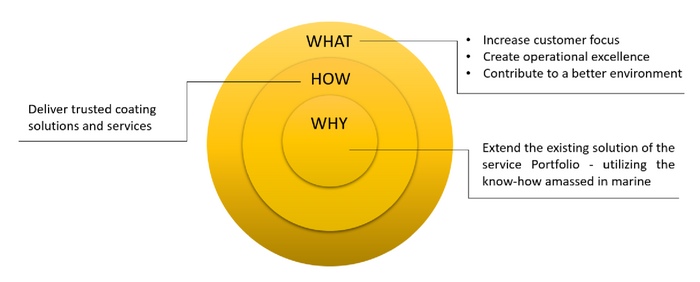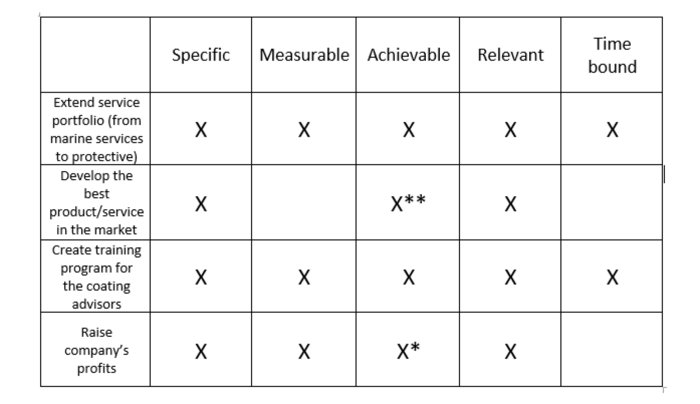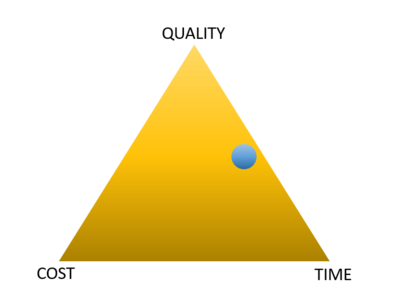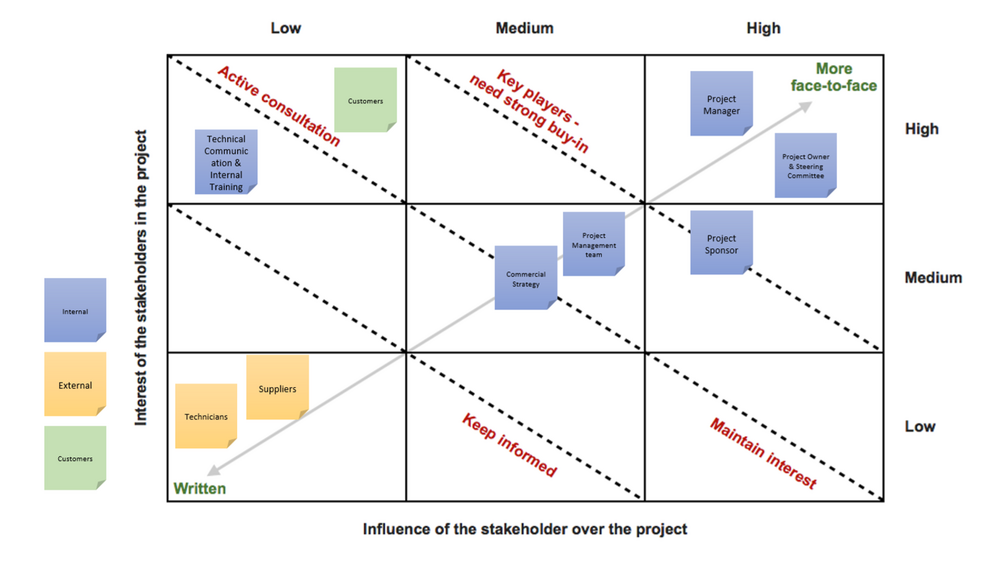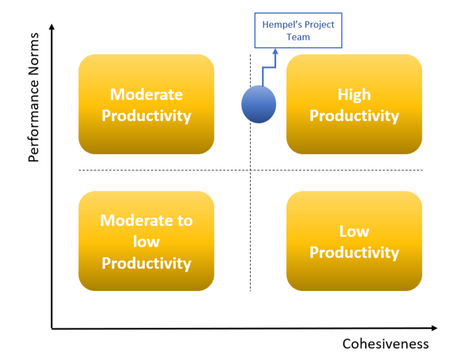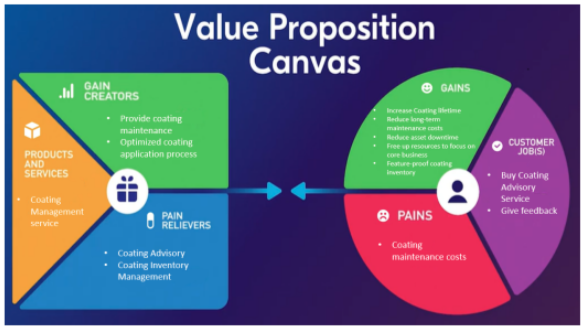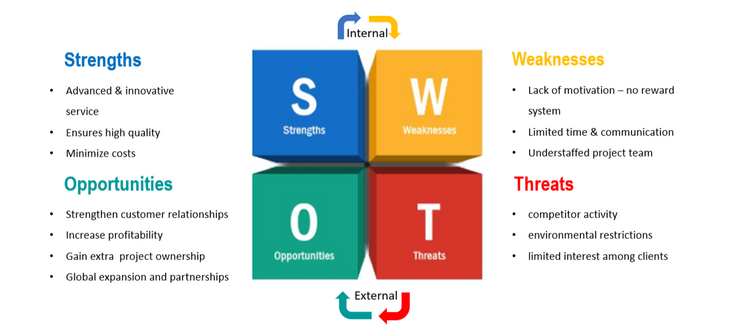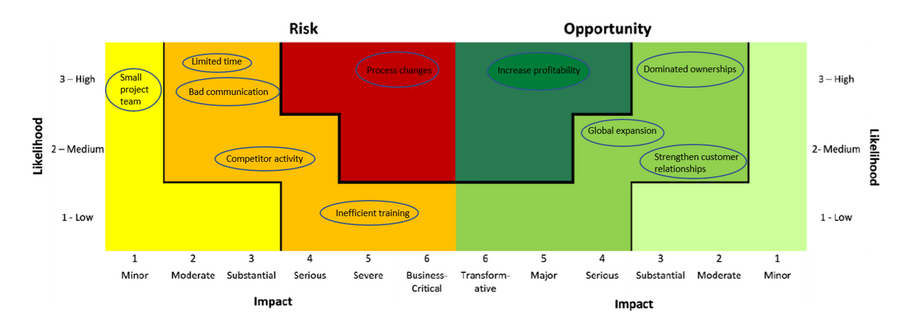Hempel Coating Management
(→Tools) |
(→References) |
||
| (70 intermediate revisions by 7 users not shown) | |||
| Line 3: | Line 3: | ||
| − | As part of Hempel’s newly formed service | + | As part of Hempel’s newly formed service organization, a number of development projects of new services |
have been planned coupled with several operational upgrades. A foundational service offering is “coating | have been planned coupled with several operational upgrades. A foundational service offering is “coating | ||
advisory”. This service includes sending expert coating advisors to oversee surface preparation and | advisory”. This service includes sending expert coating advisors to oversee surface preparation and | ||
| − | coating application of the products. Initially Hempel acquired two levels of coating advisory, Standard | + | coating application of the products. Initially, Hempel acquired two levels of coating advisory, Standard |
| − | coating advisory and Premium coating advisory. After collaborating with key customers, a third level | + | coating advisory, and Premium coating advisory. After collaborating with key customers, a third level |
was developed for the marine segment where the company took over the responsibility of planning the | was developed for the marine segment where the company took over the responsibility of planning the | ||
| − | dry docking projects. | + | dry-docking projects. Drydocking projects are referring to fixed duration re-coatings of vessels, which |
takes place every five years according to regulatory requirements. In marine, this new service was called | takes place every five years according to regulatory requirements. In marine, this new service was called | ||
| − | “Project Management”. Therefore, the scope of this project was to develop a similar third tier service | + | “Project Management”. Therefore, the scope of this project was to develop a similar third-tier service |
for the protective segments. By doing so, they offer more than premium coating advisory and they could | for the protective segments. By doing so, they offer more than premium coating advisory and they could | ||
provide more value and earn more per hour. | provide more value and earn more per hour. | ||
| − | == | + | == Vision and Goals == |
| − | ''' | + | '''Purpose''' |
| − | + | ||
| + | Vision and Purpose | ||
| + | The purpose of the project can be defined by answering the question ‘Why are we doing this project and is therefore considered the raison d’etre of a project. A common way to represent the main reasons for the creation of a project is by the implementation of the golden circle model. Based on this model, the purpose of the project can be answered by three specific questions, why, how and what. In the given project case, the golden circle model has been used to define these three important questions, as shown below (Figure 1). | ||
| + | [[File: Golden circle.png | thumb | center | 700px | Figure 1. Golden Circle Model]] | ||
| + | '''Goal of the Project''' | ||
| + | A smart acronym ensures that the company’s goals are clear and reachable. A goal should be clear and specific, in order to be able to focus the efforts or feel truly motivated to achieve it. It’s important to have measurable goals to track progress and stay motivated. Goals also need to be realistic and attainable to be successful. In other words, it should stretch the team’s abilities but remain possible. Relevance is about ensuring that your goal matters and that it also aligns with other relevant goals. Last, every goal needs a target date, to create a deadline to focus on and something to work toward. The SMART goals are implemented to the sub-goals in Hempel Case. Extending the company’s portfolio to protective management is a service very specific, achievable and relevant. The project is time-based, and success is also measurable by statistics. Creating a coating training program fulfills the SMART goals criteria, as well. Being competitive and developing the best product is a specific and relevant goal, but it may be achieved in the far future [X**]. There is not a certain time point to finish it and it seems more difficult to be accomplished. Moreover, raising Hempel’s profits is not a time-limited goal and may be successful in the near future [X*]. Each goal of the project appears to be clear and relevant enough to motivate and matters to everyone participated.See Figure 2 below. | ||
| + | |||
| + | [[File: Smart Goals.png | thumb | center | 700px | Figure 2. SMART Goals]] | ||
| + | |||
| + | '''Success Criteria''' | ||
| + | |||
| + | When a project is conducted, not only the reason for doing it should be taken into account but also | ||
| + | the success of it application.The evaluation of its success is a difficult aspect to measure and it can | ||
| + | depend on a variety of factors. However, in the examined case the project is in an ongoing process | ||
| + | where the basic principles have been established but it is not available in the market yet. Changes and | ||
| + | updates of its services are still implemented in order to meet the desirable criteria. Therefore, there is | ||
| + | the possibility to examine the project process so far. This can be done by using the model called the iron | ||
| + | triangle, which illustrates the relationship between cost, time and quality (TCQ), which are parameters | ||
| + | that project managers are highly advised to take into consideration when planning a project. TCQ model | ||
| + | is considered to be an useful management tool to show management focus and measure any management success. The project manager has to have the proper knowledge regarding the relations between the | ||
| + | constraints of TCQ and the right ones get prioritized in their project. | ||
| + | See Figure 3. | ||
| + | |||
| + | |||
| + | [[File: Iron triangle.png | thumb | center | 400px | Figure 3. Iron Triangle]] | ||
| + | |||
| + | |||
| + | The above figure illustrates the basic constraints that were prioritized during the development of the project. As it is shown, time and quality was the two constraints that were prioritized. Such prioritisation helps project team to make quick decisions and focus effort on what is most relevant. Quality is very significant parameter since delivering trusted services and premium coating advisory are mainly | ||
| + | implemented in this project. Time is also a highly influential factor in this case,as this specific concept had been attempted and failed in the past. | ||
| + | |||
| + | ==People== | ||
| + | |||
| + | The processes of managing people are always challenging. A good manager is considered someone who empowers their workforce and creates a work environment in which a situation of engagement is possible. Employees with a high level of engagement in the workplace are more likely to contribute to a company’s success. Furthermore, employees who feel like an important member of a team and a useful component in driving the company’s success are more likely to work harder. Also, managers can positively reinforce people by giving them outcomes they desire when they perform organizationally functional behaviors, and this can lead to better performance. The people’s perspective emphasizes, therefore on a good project manager. [3] In order to make clear the hierarchy of the project team, the number of people that are involved in the coating management project and the level of authority of the project manager in Hempel, Figure 5 is given. The upward stakeholders that got the power to influence the direction of the project and final decisions related to its completion are also included in the chart. | ||
| + | |||
| + | '''Stakeholders''' | ||
| + | |||
| + | Stakeholders | ||
| + | The notion of stakeholders is of utmost importance in doing projects and that is the reason why stakeholder management is a key process in every single management methodology. “Stakeholders” are persons or organizations who are actively involved in a project or whose interests may be positively or negatively affected by the performance or completion of the project.[4] Furthermore, various categories of stakeholders might have influence and power over the project, its goals, and the project team members. So, it is important to identify and assess the stakeholders that are related to the Hempel project in order to understand the level of their influence and the interest they might have for the completion of the project. To make the assessment process easier, it is needed to categorize the stakeholders in three different groups: internal, external and customers/client companies. | ||
| + | Internal stakeholders can be divided further into two categories, downward and upward. Downward stakeholders could be the project team members and other departments of the organization that are working upon the project. In this specific project, downward stakeholders are the project team. the technical and communication department. The marketing department, Commercial strategy department, and the technical reference group. They hold a critical role in the completion of the project because their position as employees might cause negative or positive effects on the performance of the project. Upward stakeholders are these that have the power, authority and are financing the project. In Hempel’s case, these are Project Owner, Board Steering Committee and Project Sponsor as it is shown to the stakeholder mapping matrix, see Figure 4. | ||
| + | |||
| + | [[File: Mapping Matrix.png | thumb | center | 1000px | Figure 4. Mapping Matrix]] | ||
| + | |||
| + | Overall, it is essential to create communication channels and increase information flow to keep the stakeholders satisfied. The interest vs. influence matrix offers a good overview of stakeholders so to develop and plan the stakeholder strategy for coating management and increase efficiency and effectiveness during the application of the project. | ||
| + | |||
| + | '''Communication''' | ||
| + | |||
| + | Communication is an important factor that can affect group performance.[5] In the existence of an effective communication matrix, team members feel important and there is group cohesiveness, which means that members are attracted to or loyal to their team.[3] This is the starting point of motivation and satisfaction that encourages team members to continue adding more effort to the achievement of team goals. On the other hand, there is a chance for the team to fail to communicate effectively wasting important time and can lead to misunderstandings and conflicts. In our case, the people who are involved in this project have different backgrounds, but they all have experience in this kind of projects, so they can speak the same language. In Hempel’s coating management project, the project team was a large group of 18 people that work for the same goal, but there are included also small teams that work together and cooperate to reach separate objectives. For example, the Technical communication and Internal training department which consists of four people, the Technical reference group (three), etc. Communication has a clear impact on the productivity, performance and team conformity of a project management team so an assessment of the group's productivity is given below (Figure 5): | ||
| + | |||
| + | [[File: Hempel_prod.png | thumb | center | 450px | Figure 5. Hempel's Productivity]] | ||
| + | |||
| + | |||
| + | '''Motivation - Reward system''' | ||
| + | |||
| + | Motivation can have a significant impact on project performance and quality. Thus, finding the right motivators for the people of the project is one of the key challenges a project manager has to solve. Challenging and also important can be the task to keep the team members motivated during the whole project. Usually, the project team members are people with various backgrounds and personalities which might result in different desires and goals. However, there are certain needs that everyone wants to fulfill, such as salary, a comfortable place to work, etc. | ||
'''Value Proposition Canvas''' | '''Value Proposition Canvas''' | ||
| − | |||
| + | As it is shown in Figure 6 there are several reasons for the clients to invest in an advanced coating management service. The proactive nature of the optimized coating service provides to the customers the ability to avoid long-term maintenance costs that are related to accidents, environmental conditions, and other common problems. The accurate inspection that took place before the initiation of any project also ensures better quality for the final results and reduces asset downtime. So from the customers' point of view, it seems like an attractive offer. On the other side, the fact that competitors are providing a standard coating advisory service at the early stages of a project to their clients for free might have negative effects(pain creators) on customers’ preference, because in this case, they have to pay extra for this advanced coating management service. However, an important difference is that this service provides full inspection and maintenance coating management for a long period after the completion of a project and that is why it is differentiated from other coating advisory services. | ||
| + | [[File: Hempel Value proposition canvas.png | thumb | center | 1000px | Figure 6. Hempel Value Proposition Canvas]] | ||
| + | |||
| + | |||
| + | |||
| + | '''Customer segment:''' The focus on the customer segment side is on ''why''; why is there a need for project initiation? | ||
| + | |||
| + | ''Customer job(s):'' The customer job(s) assess what the customer wants to do, which actions or tasks does the customer or user want to perform. In the South Sudan case, the users have a very basic customer job in the accessibility of clean drinking water. | ||
| + | |||
| + | ''Pains:'' The pains tell which negative effects the user is experiencing for the status quo. This can be a result of competitors lacking the necessary capabilities to offer a proper product or service. It can also be a result of users not having access to any products or services to fulfill their customer job. The project manager must acknowledge these customer pains, in order to identify the benefits project outcomes need to incorporate. <ref name="Inno"/> | ||
| + | |||
| + | ''Gains:'' Unlike pains, gains are not factors that are clear for the user. These are factors that the user is not necessarily expecting of a product or service but are extra benefits supplied. Gains are not essential for project success, but rather an area where project managers can differentiate their project outcomes. In the South Sudan case, the gains delivered came in the form of education in hygiene, local training of staff and clean toilet facilities. Instead of only providing clean drinking water, the consulting company provided extra features, which the company differentiates itself in the highly competitive market of consultancy. | ||
| + | |||
| + | '''Value proposition:''' From the customer segment side to the value proposition the focus changes from ''why'' to ''what'' and ''how''; what will the project delivery and how will the project deliverables satisfy customer needs? | ||
| + | |||
| + | ''Products & services:'' Outlines the products and services the project outcome is built around. | ||
| + | |||
| + | ''Pain relievers:'' Pain relievers are ways of removing the customer/user’s pains. These deliverables are essential for user satisfaction. The pain relievers are not always in the form of products and services but can be features of these deliverables that solve customer/user pain of the status quo. Niras conducted construction work to create improved water wells for local communities in need as well as using local companies for maintenance for a sustainable solution. | ||
| + | |||
| + | ''Gain Creators:'' The gain creators are deliverables creating the extra gains for the customer/user. In the South Sudan case, this was enabled by creating education and training programs, spending extra resources to create extra value for the users. | ||
| Line 35: | Line 106: | ||
'''SWOT Analysis''' | '''SWOT Analysis''' | ||
| − | |||
| − | + | Identification is the first step in uncertainty analysis. It is necessary to identify all possible risks and develop risk management by focusing attention where needed. It is also important to specify the objective of the project and identify the internal and external factors that are favorable and unfavorable to achieving that objective. | |
| + | SWOT tool is appropriate to implement the strengths and weaknesses that arise from within the company, as well as the opportunities and threats from external sources [6]. See Figure 7 below. | ||
| + | [[File:SWOT_analysis.png | thumb | center | 750px | Figure 7. SWOT analysis ]] | ||
| + | Based on the information from the interviews a SWOT analysis was carried out. It seems that the main threat of the case is the competition that Hempel will have to face in the future, by expanding their portfolio into advanced coating management. As the project manager mentioned himself, there are several companies in this area that offer the service of coating management in other large companies and clients for free, and this occasion appears to be a threat. However, through this project, Hempel develops more premium coating advisory, including maintenance training and advanced services offered by charge. From another point of view, this differentiation can be identified as an opportunity to increase their profits and strengthen their customer relationships. | ||
| − | ''' | + | ==Uncertainty== |
| − | - | + | |
| + | |||
| + | ''' The double probability impact matrix (DPIM) ''' | ||
| + | |||
| + | Through risk assessment, every company can estimate the probability of occurrence of each risk, evaluate their impact and develop the overall risk situation. The project management team has to prioritize the risks several times throughout the life cycle of the problem and adapt to changes. The project manager, after identifying the most important uncertain events that may occur, distinguishes them into risks and opportunities. | ||
| + | |||
| + | The double probability impact matrix illustrates the most significant occasions the company had to deal with during the development of a project. In Hempel's case, the area of senior management focus was on the changes and adjustments that occurred during this project, as well as the opportunity of increasing the total profits of the company. The project manager mentioned that throughout the life cycle of this case they confronted several changes. Scope, timelines, and names changed during the project procedure. At first, it was planned to develop a similar project with the one in the marine coating service. However, it became clear during the process that there are important differences in the protective field and it was necessary to change many aspects during the project planning and scheduling. As was mentioned above, the rise of the company’s profits is a high potential opportunity with major impact and that’s why it’s included in the area of focus. The above mentioned are presented at the below figure. See Figure 8 below. | ||
| + | |||
| + | [[File:DoubleopportunityMatrix.png | thumb | center | 900px | Figure 8. Double Probability Impact Matrix]] | ||
| + | |||
| + | '''Assess Risks''' | ||
| + | |||
| + | Through risk assessment, Hempel’s project estimates the probability of occurrence of each risk, evaluates their impact and develops the overall risk situation. The project management team had to prioritize the risks several times throughout the life cycle of the problem and adapt to changes. The project manager, after identifying the most important uncertain events that may occur, distinguished them into risks and opportunities. The double probability impact matrix illustrates the most significant occasions the company had to deal with during the coating project management. The area of senior management focus was on the changes and adjustments that occurred during this project, as well as the opportunity of increasing the total profits of the company. The project manager mentioned that throughout the life cycle of this case they confronted several changes. Scope, timelines, and names changed during the project procedure. At first, it was planned to evolve a similar project with the one in marine coating service. However, it became clear during the process that there are important differences in the protective field and it was necessary to change many aspects during the project planning and scheduling. As was mentioned above, the rise of the company’s profits is a high potential opportunity with major impact and that’s why it’s included in the area of focus. | ||
| + | |||
| + | '''Ishikawa cause and effect (fishbone diagram)'''[5] | ||
| + | |||
| + | This chart shows the causes of a specific problem. Fishbone diagram explores the steps leading up to the causes and conditions that can cause problems, selects the problem situation and familiar people, thinks about possible causes of problems, and analyzes each cause and draws results. Is used. This method, also called the cause-and-effect diagram method, is often used for enterprise-wide quality management (TQM) and focuses on eliminating past-oriented and negative performance differences. | ||
== Conclusion == | == Conclusion == | ||
| + | This section presents a brief description of the project that is going to be analyzed through the course of the Advanced Engineering Project, Program and Portfolio Management and the company that was contacted in order to gather all the data needed. In order to conduct a preliminary analysis of Hempel's project, "Coating management", a variety of management tools will be applied. The basic information of these tools is illustrated in this section as well as their potential implementation in the analysis of "Coating management". In conclusion, after evaluating all the information collected and the available tools, the appropriate tools will be selected and they will be implemented in our case study. | ||
| + | |||
| + | |||
| + | == References == | ||
| + | |||
| + | 1. https://www.hempel.com/ | ||
| + | |||
| + | 2. 'Doing projects, A Nordic Flavor of managing Projects', DS Handbook 185, Joana Geraldi, Christian Thuesen, Josef Oehmen, Verena Stingl, 2017 | ||
| + | |||
| + | 3. 'Course handbook', Christian Thuesen, Josef Oehmen, https://cn.inside.dtu.dk/cnnet/filesharing/download/d349f4c9-11fe-4d58-bde4-ea4b489525884 | ||
| + | |||
| + | 4. 'Essentials of Contemporary Management', Gareth R Jones, Jennifer M George, 2016 | ||
| + | |||
| + | 5. 'Fishbone diagram (Ishikawa cause and effect)', Margaret Rouse, https://whatis.techtarget.com/definition/fishbone-diagram, 2019 | ||
Latest revision as of 09:58, 12 May 2020
Contents |
[edit] Introduction
As part of Hempel’s newly formed service organization, a number of development projects of new services have been planned coupled with several operational upgrades. A foundational service offering is “coating advisory”. This service includes sending expert coating advisors to oversee surface preparation and coating application of the products. Initially, Hempel acquired two levels of coating advisory, Standard coating advisory, and Premium coating advisory. After collaborating with key customers, a third level was developed for the marine segment where the company took over the responsibility of planning the dry-docking projects. Drydocking projects are referring to fixed duration re-coatings of vessels, which takes place every five years according to regulatory requirements. In marine, this new service was called “Project Management”. Therefore, the scope of this project was to develop a similar third-tier service for the protective segments. By doing so, they offer more than premium coating advisory and they could provide more value and earn more per hour.
[edit] Vision and Goals
Purpose
Vision and Purpose
The purpose of the project can be defined by answering the question ‘Why are we doing this project and is therefore considered the raison d’etre of a project. A common way to represent the main reasons for the creation of a project is by the implementation of the golden circle model. Based on this model, the purpose of the project can be answered by three specific questions, why, how and what. In the given project case, the golden circle model has been used to define these three important questions, as shown below (Figure 1).
Goal of the Project
A smart acronym ensures that the company’s goals are clear and reachable. A goal should be clear and specific, in order to be able to focus the efforts or feel truly motivated to achieve it. It’s important to have measurable goals to track progress and stay motivated. Goals also need to be realistic and attainable to be successful. In other words, it should stretch the team’s abilities but remain possible. Relevance is about ensuring that your goal matters and that it also aligns with other relevant goals. Last, every goal needs a target date, to create a deadline to focus on and something to work toward. The SMART goals are implemented to the sub-goals in Hempel Case. Extending the company’s portfolio to protective management is a service very specific, achievable and relevant. The project is time-based, and success is also measurable by statistics. Creating a coating training program fulfills the SMART goals criteria, as well. Being competitive and developing the best product is a specific and relevant goal, but it may be achieved in the far future [X**]. There is not a certain time point to finish it and it seems more difficult to be accomplished. Moreover, raising Hempel’s profits is not a time-limited goal and may be successful in the near future [X*]. Each goal of the project appears to be clear and relevant enough to motivate and matters to everyone participated.See Figure 2 below.
Success Criteria
When a project is conducted, not only the reason for doing it should be taken into account but also the success of it application.The evaluation of its success is a difficult aspect to measure and it can depend on a variety of factors. However, in the examined case the project is in an ongoing process where the basic principles have been established but it is not available in the market yet. Changes and updates of its services are still implemented in order to meet the desirable criteria. Therefore, there is the possibility to examine the project process so far. This can be done by using the model called the iron triangle, which illustrates the relationship between cost, time and quality (TCQ), which are parameters that project managers are highly advised to take into consideration when planning a project. TCQ model is considered to be an useful management tool to show management focus and measure any management success. The project manager has to have the proper knowledge regarding the relations between the constraints of TCQ and the right ones get prioritized in their project. See Figure 3.
The above figure illustrates the basic constraints that were prioritized during the development of the project. As it is shown, time and quality was the two constraints that were prioritized. Such prioritisation helps project team to make quick decisions and focus effort on what is most relevant. Quality is very significant parameter since delivering trusted services and premium coating advisory are mainly
implemented in this project. Time is also a highly influential factor in this case,as this specific concept had been attempted and failed in the past.
[edit] People
The processes of managing people are always challenging. A good manager is considered someone who empowers their workforce and creates a work environment in which a situation of engagement is possible. Employees with a high level of engagement in the workplace are more likely to contribute to a company’s success. Furthermore, employees who feel like an important member of a team and a useful component in driving the company’s success are more likely to work harder. Also, managers can positively reinforce people by giving them outcomes they desire when they perform organizationally functional behaviors, and this can lead to better performance. The people’s perspective emphasizes, therefore on a good project manager. [3] In order to make clear the hierarchy of the project team, the number of people that are involved in the coating management project and the level of authority of the project manager in Hempel, Figure 5 is given. The upward stakeholders that got the power to influence the direction of the project and final decisions related to its completion are also included in the chart.
Stakeholders
Stakeholders The notion of stakeholders is of utmost importance in doing projects and that is the reason why stakeholder management is a key process in every single management methodology. “Stakeholders” are persons or organizations who are actively involved in a project or whose interests may be positively or negatively affected by the performance or completion of the project.[4] Furthermore, various categories of stakeholders might have influence and power over the project, its goals, and the project team members. So, it is important to identify and assess the stakeholders that are related to the Hempel project in order to understand the level of their influence and the interest they might have for the completion of the project. To make the assessment process easier, it is needed to categorize the stakeholders in three different groups: internal, external and customers/client companies. Internal stakeholders can be divided further into two categories, downward and upward. Downward stakeholders could be the project team members and other departments of the organization that are working upon the project. In this specific project, downward stakeholders are the project team. the technical and communication department. The marketing department, Commercial strategy department, and the technical reference group. They hold a critical role in the completion of the project because their position as employees might cause negative or positive effects on the performance of the project. Upward stakeholders are these that have the power, authority and are financing the project. In Hempel’s case, these are Project Owner, Board Steering Committee and Project Sponsor as it is shown to the stakeholder mapping matrix, see Figure 4.
Overall, it is essential to create communication channels and increase information flow to keep the stakeholders satisfied. The interest vs. influence matrix offers a good overview of stakeholders so to develop and plan the stakeholder strategy for coating management and increase efficiency and effectiveness during the application of the project.
Communication
Communication is an important factor that can affect group performance.[5] In the existence of an effective communication matrix, team members feel important and there is group cohesiveness, which means that members are attracted to or loyal to their team.[3] This is the starting point of motivation and satisfaction that encourages team members to continue adding more effort to the achievement of team goals. On the other hand, there is a chance for the team to fail to communicate effectively wasting important time and can lead to misunderstandings and conflicts. In our case, the people who are involved in this project have different backgrounds, but they all have experience in this kind of projects, so they can speak the same language. In Hempel’s coating management project, the project team was a large group of 18 people that work for the same goal, but there are included also small teams that work together and cooperate to reach separate objectives. For example, the Technical communication and Internal training department which consists of four people, the Technical reference group (three), etc. Communication has a clear impact on the productivity, performance and team conformity of a project management team so an assessment of the group's productivity is given below (Figure 5):
Motivation - Reward system
Motivation can have a significant impact on project performance and quality. Thus, finding the right motivators for the people of the project is one of the key challenges a project manager has to solve. Challenging and also important can be the task to keep the team members motivated during the whole project. Usually, the project team members are people with various backgrounds and personalities which might result in different desires and goals. However, there are certain needs that everyone wants to fulfill, such as salary, a comfortable place to work, etc.
Value Proposition Canvas
As it is shown in Figure 6 there are several reasons for the clients to invest in an advanced coating management service. The proactive nature of the optimized coating service provides to the customers the ability to avoid long-term maintenance costs that are related to accidents, environmental conditions, and other common problems. The accurate inspection that took place before the initiation of any project also ensures better quality for the final results and reduces asset downtime. So from the customers' point of view, it seems like an attractive offer. On the other side, the fact that competitors are providing a standard coating advisory service at the early stages of a project to their clients for free might have negative effects(pain creators) on customers’ preference, because in this case, they have to pay extra for this advanced coating management service. However, an important difference is that this service provides full inspection and maintenance coating management for a long period after the completion of a project and that is why it is differentiated from other coating advisory services.
Customer segment: The focus on the customer segment side is on why; why is there a need for project initiation?
Customer job(s): The customer job(s) assess what the customer wants to do, which actions or tasks does the customer or user want to perform. In the South Sudan case, the users have a very basic customer job in the accessibility of clean drinking water.
Pains: The pains tell which negative effects the user is experiencing for the status quo. This can be a result of competitors lacking the necessary capabilities to offer a proper product or service. It can also be a result of users not having access to any products or services to fulfill their customer job. The project manager must acknowledge these customer pains, in order to identify the benefits project outcomes need to incorporate. [1]
Gains: Unlike pains, gains are not factors that are clear for the user. These are factors that the user is not necessarily expecting of a product or service but are extra benefits supplied. Gains are not essential for project success, but rather an area where project managers can differentiate their project outcomes. In the South Sudan case, the gains delivered came in the form of education in hygiene, local training of staff and clean toilet facilities. Instead of only providing clean drinking water, the consulting company provided extra features, which the company differentiates itself in the highly competitive market of consultancy.
Value proposition: From the customer segment side to the value proposition the focus changes from why to what and how; what will the project delivery and how will the project deliverables satisfy customer needs?
Products & services: Outlines the products and services the project outcome is built around.
Pain relievers: Pain relievers are ways of removing the customer/user’s pains. These deliverables are essential for user satisfaction. The pain relievers are not always in the form of products and services but can be features of these deliverables that solve customer/user pain of the status quo. Niras conducted construction work to create improved water wells for local communities in need as well as using local companies for maintenance for a sustainable solution.
Gain Creators: The gain creators are deliverables creating the extra gains for the customer/user. In the South Sudan case, this was enabled by creating education and training programs, spending extra resources to create extra value for the users.
SWOT Analysis
Identification is the first step in uncertainty analysis. It is necessary to identify all possible risks and develop risk management by focusing attention where needed. It is also important to specify the objective of the project and identify the internal and external factors that are favorable and unfavorable to achieving that objective. SWOT tool is appropriate to implement the strengths and weaknesses that arise from within the company, as well as the opportunities and threats from external sources [6]. See Figure 7 below.
Based on the information from the interviews a SWOT analysis was carried out. It seems that the main threat of the case is the competition that Hempel will have to face in the future, by expanding their portfolio into advanced coating management. As the project manager mentioned himself, there are several companies in this area that offer the service of coating management in other large companies and clients for free, and this occasion appears to be a threat. However, through this project, Hempel develops more premium coating advisory, including maintenance training and advanced services offered by charge. From another point of view, this differentiation can be identified as an opportunity to increase their profits and strengthen their customer relationships.
[edit] Uncertainty
The double probability impact matrix (DPIM)
Through risk assessment, every company can estimate the probability of occurrence of each risk, evaluate their impact and develop the overall risk situation. The project management team has to prioritize the risks several times throughout the life cycle of the problem and adapt to changes. The project manager, after identifying the most important uncertain events that may occur, distinguishes them into risks and opportunities.
The double probability impact matrix illustrates the most significant occasions the company had to deal with during the development of a project. In Hempel's case, the area of senior management focus was on the changes and adjustments that occurred during this project, as well as the opportunity of increasing the total profits of the company. The project manager mentioned that throughout the life cycle of this case they confronted several changes. Scope, timelines, and names changed during the project procedure. At first, it was planned to develop a similar project with the one in the marine coating service. However, it became clear during the process that there are important differences in the protective field and it was necessary to change many aspects during the project planning and scheduling. As was mentioned above, the rise of the company’s profits is a high potential opportunity with major impact and that’s why it’s included in the area of focus. The above mentioned are presented at the below figure. See Figure 8 below.
Assess Risks
Through risk assessment, Hempel’s project estimates the probability of occurrence of each risk, evaluates their impact and develops the overall risk situation. The project management team had to prioritize the risks several times throughout the life cycle of the problem and adapt to changes. The project manager, after identifying the most important uncertain events that may occur, distinguished them into risks and opportunities. The double probability impact matrix illustrates the most significant occasions the company had to deal with during the coating project management. The area of senior management focus was on the changes and adjustments that occurred during this project, as well as the opportunity of increasing the total profits of the company. The project manager mentioned that throughout the life cycle of this case they confronted several changes. Scope, timelines, and names changed during the project procedure. At first, it was planned to evolve a similar project with the one in marine coating service. However, it became clear during the process that there are important differences in the protective field and it was necessary to change many aspects during the project planning and scheduling. As was mentioned above, the rise of the company’s profits is a high potential opportunity with major impact and that’s why it’s included in the area of focus.
Ishikawa cause and effect (fishbone diagram)[5]
This chart shows the causes of a specific problem. Fishbone diagram explores the steps leading up to the causes and conditions that can cause problems, selects the problem situation and familiar people, thinks about possible causes of problems, and analyzes each cause and draws results. Is used. This method, also called the cause-and-effect diagram method, is often used for enterprise-wide quality management (TQM) and focuses on eliminating past-oriented and negative performance differences.
[edit] Conclusion
This section presents a brief description of the project that is going to be analyzed through the course of the Advanced Engineering Project, Program and Portfolio Management and the company that was contacted in order to gather all the data needed. In order to conduct a preliminary analysis of Hempel's project, "Coating management", a variety of management tools will be applied. The basic information of these tools is illustrated in this section as well as their potential implementation in the analysis of "Coating management". In conclusion, after evaluating all the information collected and the available tools, the appropriate tools will be selected and they will be implemented in our case study.
[edit] References
2. 'Doing projects, A Nordic Flavor of managing Projects', DS Handbook 185, Joana Geraldi, Christian Thuesen, Josef Oehmen, Verena Stingl, 2017
3. 'Course handbook', Christian Thuesen, Josef Oehmen, https://cn.inside.dtu.dk/cnnet/filesharing/download/d349f4c9-11fe-4d58-bde4-ea4b489525884
4. 'Essentials of Contemporary Management', Gareth R Jones, Jennifer M George, 2016
5. 'Fishbone diagram (Ishikawa cause and effect)', Margaret Rouse, https://whatis.techtarget.com/definition/fishbone-diagram, 2019
Cite error:
<ref> tags exist, but no <references/> tag was found
